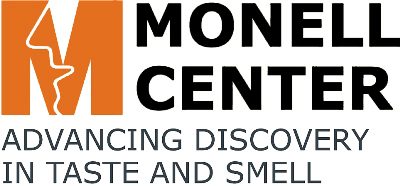Newswise — As part of a year-long recreation of Darwin’s epic voyage on the HMS Beagle, an olfactory scientist from the Monell Center will explore how people respond to smell at each of the ship’s ports of call.
Like Charles Darwin before them, Monell sensory neuroscientist Sanne Boesveldt, PhD, and her collaborator Karlijn van Stralen, PhD, an epidemiologist at the Academic Medical Center in Amsterdam, will gather information from around the world to advance scientific knowledge.
In each of the approximately 25 worldwide ports where the Beagle ship docks, crew members will ask local participants will complete a ‘scratch and sniff’ smell test to evaluate their response to the same 12 odors. The researchers hope that the findings will provide insight into how our response to odor is influenced by culture and gender.
Odors to be used in the test are cinnamon, turpentine, lemon, smoke, chocolate, rose, paint thinner, banana, pineapple, gasoline, soap, and onion. Ratings will include intensity, pleasantness and familiarity, and participants also will be asked to identify the odor.
“This global project potentially could provide insight into why a given person will like some odors but not others, “said Boesveldt. “We expect that some of the odors will be less familiar in certain cultures than in others. What we don’t know is how this will influence how people rate the odor’s pleasantness or intensity.”
The smell experiment was selected by organizers of the Beagle project as part of a scientific contest to participate in the Beagle adventure. Sponsored by Dutch television station VPRO, the project – entitled “On the Future of Species” – will reconstruct Darwin’s voyage to examine today’s world from the perspective of evolution.
The sense of smell appeared early in evolution – even before sight and hearing – as a way for organisms to obtain information about the surrounding world. Cues detected by this ancient sense could signal the presence of nearby food, a likely mate or looming danger; information critical for continued survival. Over time, smell has developed into a means of communication in many species. Social status, sexual receptivity, and even personal identity are just some of the types of information detected through smell.
Boesveldt’s current research focuses on how the brain perceives and processes odors. A postdoctoral fellow at Monell with an interest in the influence of smell on normal and disordered human eating behavior, she explains, “Smell plays a critical role in human nutrition, food intake, and related diseases such as obesity and diabetes. Our project on the Beagle journey looks at gender differences and also at differences between how humans respond to food versus nonfood odors, so it’s right up my alley.”
Despite the evolutionary importance of smell, many mysteries remain about this ancient sense. It is only within the past 15 years that scientists have begun to understand how odors are detected. Much remains to be discovered. How many different odors can humans smell? How do odors influence human emotions, behavior and health? And the question addressed by Boesveldt and van Stralen: What determines how we respond to a given odor?
Noting Darwin’s keen interest in the sense of smell, Boesveldt comments, “Darwin recognized that smell is important to species survival in many ways. The Beagle project allows us to continue his pioneering work and also to educate people about this vital sense.”
The Beagle journey departs from Plymouth, England on September 1. Highly interactive, the voyage will be filmed and broadcast on television and the web as a weekly documentary series. Scientific findings will be available on the Beagle website, http://beagle.vpro.nl/, which also contains more information on the Beagle project.
The Monell Chemical Senses Center is an independent nonprofit basic research institute based in Philadelphia, Pennsylvania. Monell advances scientific understanding of the mechanisms and functions of taste and smell to benefit human health and well-being. Using an interdisciplinary approach, scientists collaborate in the programmatic areas of sensation and perception; neuroscience and molecular biology; environmental and occupational health; nutrition and appetite; health and well-being; development, aging and regeneration; and chemical ecology and communication. For more information about Monell, visit www.monell.org.
